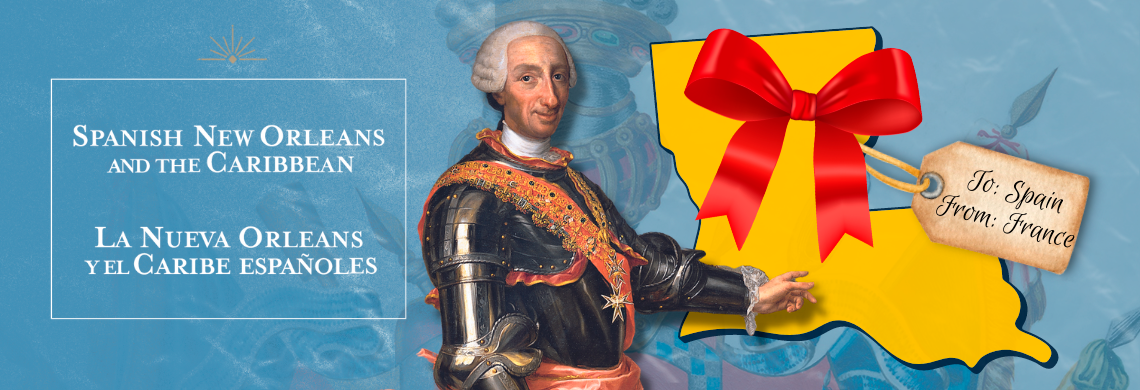The Historic New Orleans Collection continues its “Exhibition Shortcuts” YouTube series with a video that explores the factors that brought Louisiana under Spanish control. The series, produced in conjunction with the exhibition Spanish New Orleans and the Caribbean, provides brief talks similar to what you would hear from our Visitor Services staff in the gallery. Live tours of the exhibition are offered in THNOC’s Tricentennial Wing at 520 Royal Street on Thursdays and Saturdays at 2:30 p.m. Admission is free and no registration is required.
A full transcript of the video is reproduced below. Don't want to miss the next video? Subscribe to THNOC’s YouTube channel here.
Transcript
In 1762 France ceded its Louisiana colony to Spain. Why did France give away such a huge swath of territory, and why did Spain accept the offer? The answers to these questions lie in the Seven Years’ War.
Lasting from 1756 to 1763, the Seven Years’ War was a global conflict that saw the major European powers embroiled in hostilities on four continents. By the end of the war, the balance of power in the Americas had been considerably rearranged.
France and Great Britain were the main combatants in the war. The British succeeded in capturing important French colonies in the Americas, including Canada in 1760, and several Caribbean islands. In 1761 King Louis XV of France and his Bourbon cousin, King Carlos III of Spain, formed an alliance. The next year Spain entered the war on the French side, hoping to alter the course of the conflict.
Not long after Spain joined the fight, Britain captured Havana, a crucial port in Spain’s American empire, as well as Manila in the Philippines, a key node of Spain’s trade in the Pacific
Eager to find an end to the war, France offered Louisiana to Spain as compensation for its losses and an incentive to stand with France during peace negotiations. Considering the defeats Spain had suffered, security was a top concern. Therefore, despite the potential costs and challenges of maintaining the territory, Spain accepted France’s offer. Louisiana would serve as a buffer against British incursions into Mexico.
In the 1763 Treaty of Paris that formally concluded the war, Britain took possession of Spanish Florida in exchange for the return of Havana to Spain. France ceded Louisiana east of the Mississippi River to Britain in return for their Caribbean islands. Louisiana was thus partitioned between France and Britain. However, unbeknownst to Britain, France had already ceded Louisiana to Spain in 1762 in the secret Treaty of Fontainebleau. Because of this, Spain retained the Louisiana territory west of the river and New Orleans.
As Spain integrated Louisiana into its American empire, it would face the challenges of populating the territory and developing its economy so that Louisiana would serve as an effective check against British military and commercial expansion in North America.
If you’d like to learn more about this and other topics related to our exhibition Spanish New Orleans and the Caribbean, join us at The Historic New Orleans Collection at 520 Royal Street in the French Quarter. Visit our website for more details.












